Southbounding the PCT Part III: Environmental Truths
Environmental factors can have a significant impact on how much you’ll enjoy a hike. That’s as true of day hikes as it is for thru-hikes. Sometimes it will feel like the world has you in the crosshairs for a cruel practical joke, while at other times you will feel the world bends to your will. Hikers share information on weather, water, bugs, and the general climate almost every time we meet. Here are some broad, general accounts of these factors on our SOBO hikes last year.
Snow can be a factor on both ends of your hike, creating a limited window for ideal trail conditions. You have to wait for the snow to melt in Washington, but get through Forester Pass before the snow flies again.
You sometimes hear that the SOBO weather window is shorter than for NOBOs. How did this affect your planning and the hike?
Righteous: I don’t think it had much effect on my plans. I was determined to start early, and did so despite the lingering high snow levels. I made a choice and stuck with it. Honestly, in 2017 it seemed like an easier weather window than NOBOs had. The Sierra got a big snowstorm two days after we summited Whitney, so early Sierra storms are definitely a reality. But I never felt like the weather was rushing me.
Smurf: While true, it didn’t really affect my plans. I intended to do the trail in four to five months and planned on passing through the Sierra before October.
Kirby: It didn’t really affect my planning. I planned to be at Kennedy Meadows by Oct. 1 to beat any snowstorms at high elevation.
Per Bear: It was a big snow year in 2017 so I was a bit anxious for the snow to melt and to get going, but once I started and, after a few weeks, hit my stride, it became pretty evident that getting over Forester Pass by Oct. 1 was not going to be a problem. I didn’t plan my hike at all other than a bit of training so there was no planning to be affected.
Cockblock Moses: It didn’t really change my planning before trail. But I knew from the get-go it would be a race. When I started the PCT I was health conscious and listened to my body. I started out slowly, only doing 20- to 25-mile days. Once I got moving—say three weeks in—I did my first 40-mile day after a 35-mile day. This became the norm. The only days I didn’t do a day over 30 miles was when I was going into town or leaving town. This was all because of the shorter weather window—racing to beat the snow in the Sierra Nevada. It was an intense game. Sadly enough, we still got caught in a snowstorm, but it wasn’t a 15-foot dumping of what a Sierra Nevada snowstorm could’ve been. It wasn’t the type of snowstorm we were fearing. The snow we hit in the Sierra Nevada still sucked, though, and I still have messed up toes and fingers from the frostbite.
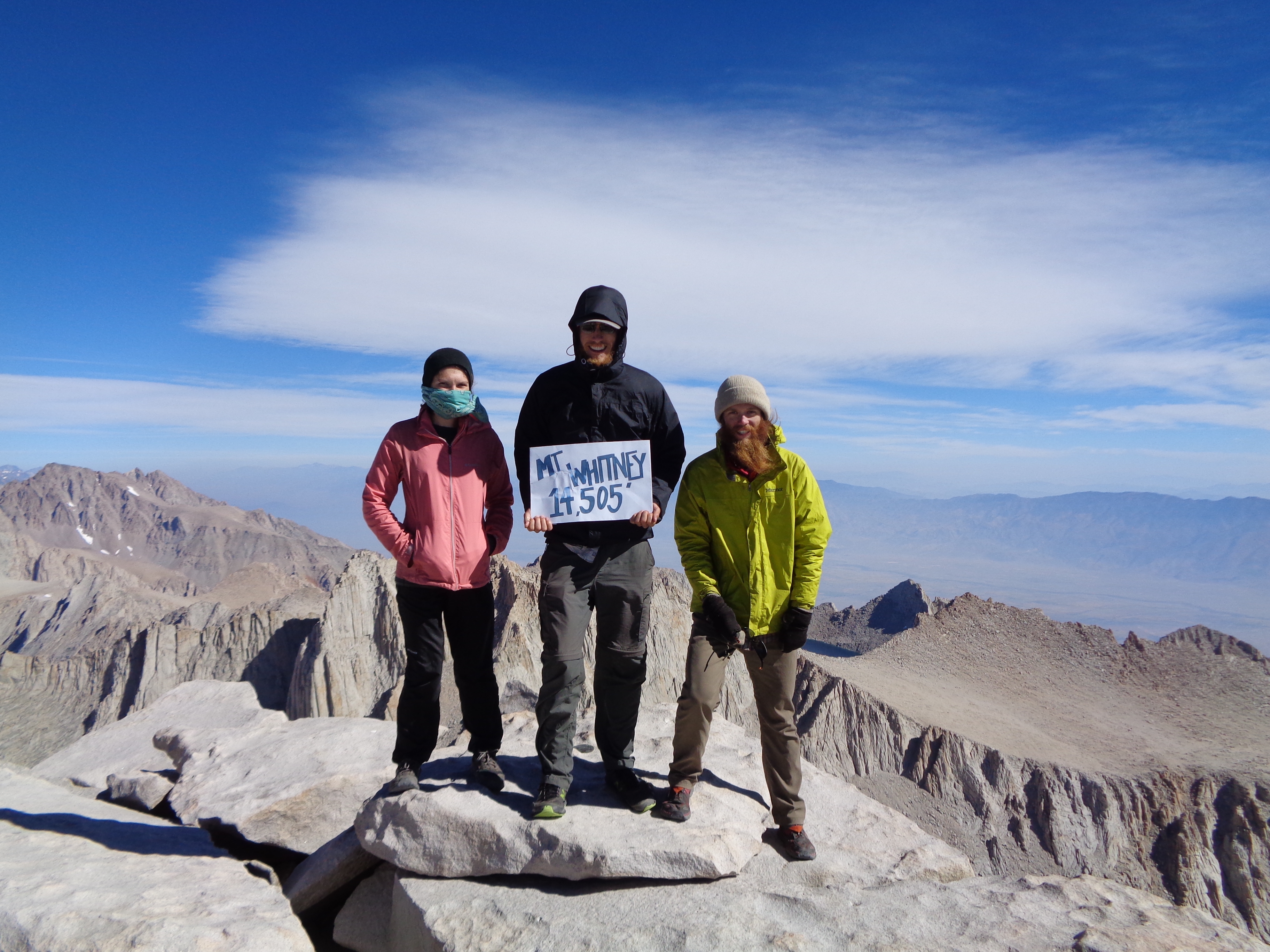
Kirby, Per Bear, and Righteous on Mount Whitney, Sept. 14, 2017. The storm Cockblock Moses mentions happened three days later.
All Day Err Day: I felt the need to push for miles to get through the Sierra as soon as possible, so I trained a bit more than usual to be in shape from the start. That helped me to never feel rushed on trail.
Badger: The shorter weather window had a huge impact on my preparation. Primarily, it meant that I had to hit the trail in good shape. For months leading up to the hike, I would average between ten to 12 miles on foot per day in the form of running, hiking, and walking.
How was the weather?
Righteous: Fantastic. Honestly, I wish it had rained a little more. On the whole trip, I experienced precipitation lasting longer than 15 minutes a grand total of five times. That includes the epic hailstorm I rode out in a bear box. I experienced cold nights in Washington, and some intensely hot days in NorCal (especially from Burney to Belden). SoCal was pretty damn nice, all things considered.
Smurf: Fantastic! Only really tough weather was at the beginning of the Sierra with a week of thunderstorms. Otherwise it was great.
Kirby: The weather is amazing. I think there were five days of rain total.
Per Bear: 10/10. Almost boring. I had two days of rain, two days of intermittent snow, and 95 days of sun.
Cockblock Moses: Superb, mostly. Washington was beautiful. I saw some mist one day in Washington. I thought it would rain every day because that’s what I heard about Washington. Very far from the case. There were a few rainy days in Oregon. And then I hit a stretch in Northern Cali that was 115 degrees for a few days. That was a hard section. It was so hot. Right before the Sierra I hit a stretch of thunderstorms. These were scary because it would never rain as hard as you’d expect it too. Being up on ridge during these storms became problematic. I’d never been closer to lightning or feeling that helpless. Within a 100-yard circumference I watched trees get hit by lightning many times, blow up, and catch fire. From there I went into the Sierra, which first hit us with windstorms. These were scary. Not being able to stand up without being knocked over. And the snowstorm I mentioned. Other than that it was chilly the whole time through. The desert was calm. Thirties and 40s at night and 70s to 80s at daytime.
All Day Err Day: Perfect! Only got 30 minutes of rain in Washington and the desert was pretty kind.
Badger: Overall, our weather was amazing. We saw rain fewer than five times the length of the trail (that I can recall). There was one hot stretch through the Hat Creek Rim area, where temperatures exceeded 100-degrees Fahrenheit, but overall it was much more temperate than what NOBOs face hiking through the desert in May and early June.
How were the bugs?
Righteous: This might be a more subjective question than it would seem. In southern Washington and northern Oregon, NOBOs I encountered kept telling nightmare stories of the vicious legions of mosquitoes lurking to the south. I hiked in pants, long sleeves, and picked up a head net at Shelter Cove. I broke the rules a few nights and ate dinner in my tent. But by and large, they were very tolerable. Probably the worst stretch was south of the Sisters Wilderness area, around Sisters Mirror Lake.
Per Bear: Hardly any mosquitoes (other than in southern Oregon).
Cockblock Moses: There was a stretch in Washington where the mosquitoes and black flies sucked. If you stopped hiking, within two seconds 50-plus mosquitoes or black flies would suck on you.
All Day Err Day: Pretty bad overall in Washington and Oregon with some terrible patches.
Badger: The mosquitoes were bad in stretches through Washington, but faded by the time we got to Oregon. Northbound hikers had warned us of the bloodsucking carnage awaiting us in central Oregon for weeks, but by the time we got there, they had almost entirely died off.
Was the sun really in your face the whole time? Did you carry an umbrella?
Seriously, this question pops up in almost everything I could find about SOBO hikes.
Righteous: In reverse order, no, and not really. I wore a hat and sunglasses constantly, but that did the trick. At no point did I incinerate my corneas by looking in the general direction of the sun. I got sunburned on the front of my body, rather than the back. Some of my pictures have the sun in them. That’s about the extent of its impact.
Smurf: Nope. That concern is simply stupid. Wear a hat, as you’ll soon find the trail rarely heads straight south.
Kirby: No, it really wasn’t! Sunglasses are a required item. Umbrellas, however, seem to be the jam for NOBOs.
Per Bear: This never even crossed my mind. I generally wore sunglasses; maybe I wouldn’t have to if I went the other way. I didn’t have an umbrella; I saw people carrying umbrellas all the time and only met one person who used hers.
Cockblock Moses: Not really. I always had sunglasses on, though. Never had an umbrella.
All Day Err Day: Lol. No and no
Badger: The sun shines directly in your eyes for 24 hours a day for the full duration of the trek. In reality, this was pretty much a non-issue. The sun hangs low early and late in the day, which makes for some really kick-ass photos. Maybe if I had also experienced hiking the trail northbound I would’ve been bothered by it, but since it was all I knew, it wasn’t a point of concern. Bring sunglasses.
I did carry an umbrella through the desert and wish I had it through sections of NorCal, but this was for the sweet relief of shading my body and not my eyes (again, sunglasses).
“The desert” generally refers to the 700 miles of trail between Kennedy Meadows (south) and the Mexican border. Water issues are not necessarily confined to this section, but its reputation has some merit.
**Never rely on water caches. They are a privilege, not a right. Trust me, finding a supposedly reliable cache to be empty or nonexistent is a terrible feeling.**
How was the water in the desert?
Righteous: It wasn’t as bad as what I had prepared for. It was still tough. I could carry up to four liters, but I rarely needed to. Probably my longest carry was about 24 miles. Most of the times I needed to ration my water, I had made a conscious decision to pass a water source or not carry a full four liters. Note: These were bad decisions and not recommended. Due to the exceptionally wet winter of 2016-17, seasonal sources that had been dry for five years were running freely when we came through at the beginning of October.
Smurf: Mostly fine. Had a couple of 30- to 40-mile hauls but generally they were OK. Just had to play it safe and really make sure that the sources actually had water ahead of time.
Kirby: Not the worst I’ve seen but usually only one water source a day, mainly from caches.
Per Bear: Good. Best water of the trip (with exception of Washington) because of all the maintained water caches. I filtered water less in the desert than anywhere else along the trail.
Cockblock Moses: The water situation in the desert is overhyped. Sure, water in the desert isn’t like Washington with a flowing stream every ten yards. But there’s still water in the desert and at your worst times there always seems to be a stocked cache. The farthest I hiked in the desert without water was maybe 30 miles. But I did that multiple times in Oregon. Another thing about the desert is that it’s easy. If you needed to hike 40 miles to water (which you won’t ever have to) you can. You’ll have trail legs.
All Day Err Day: Plenty of caches where you need them.
Badger: We would routinely go 20 miles between water sources, and many of those were caches. Without the caches, the desert would’ve been extremely challenging. Thanks to the kindness of strangers, it was much more manageable.
This website contains affiliate links, which means The Trek may receive a percentage of any product or service you purchase using the links in the articles or advertisements. The buyer pays the same price as they would otherwise, and your purchase helps to support The Trek's ongoing goal to serve you quality backpacking advice and information. Thanks for your support!
To learn more, please visit the About This Site page.

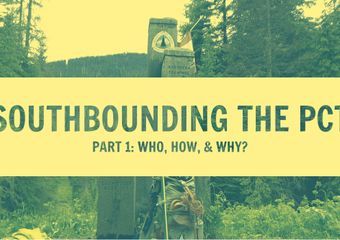
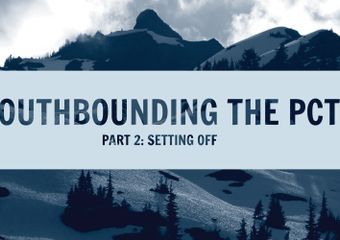
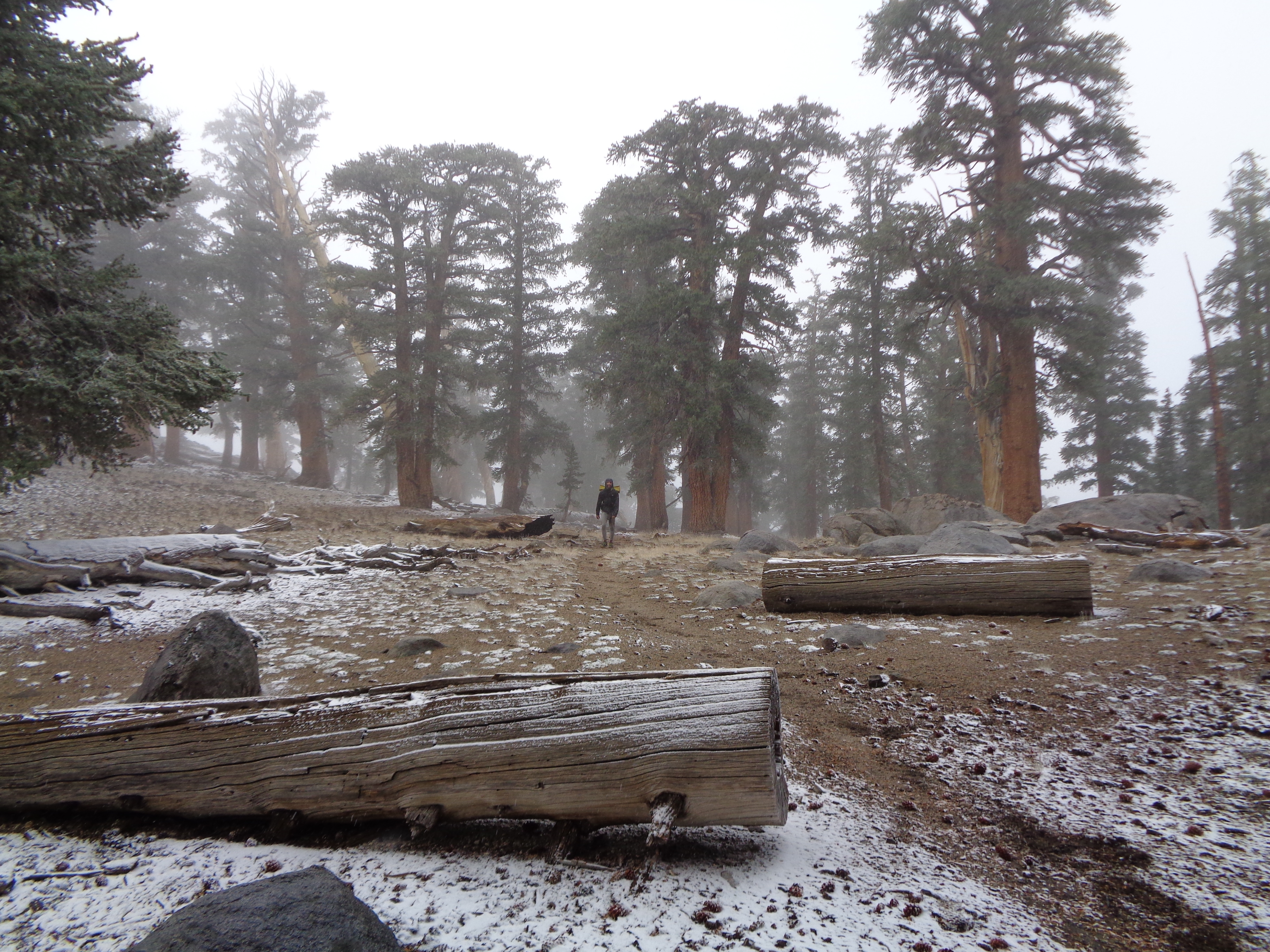
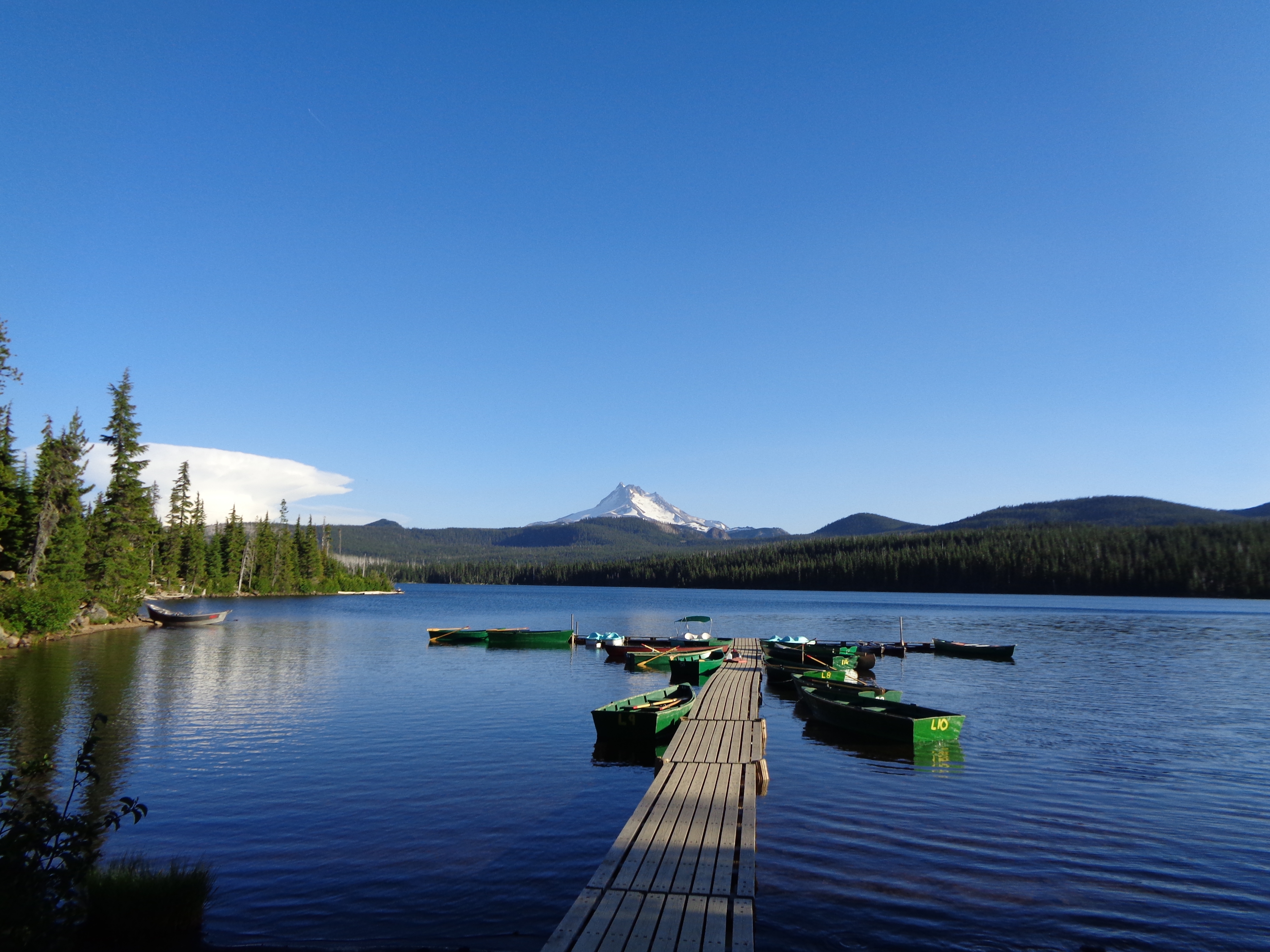




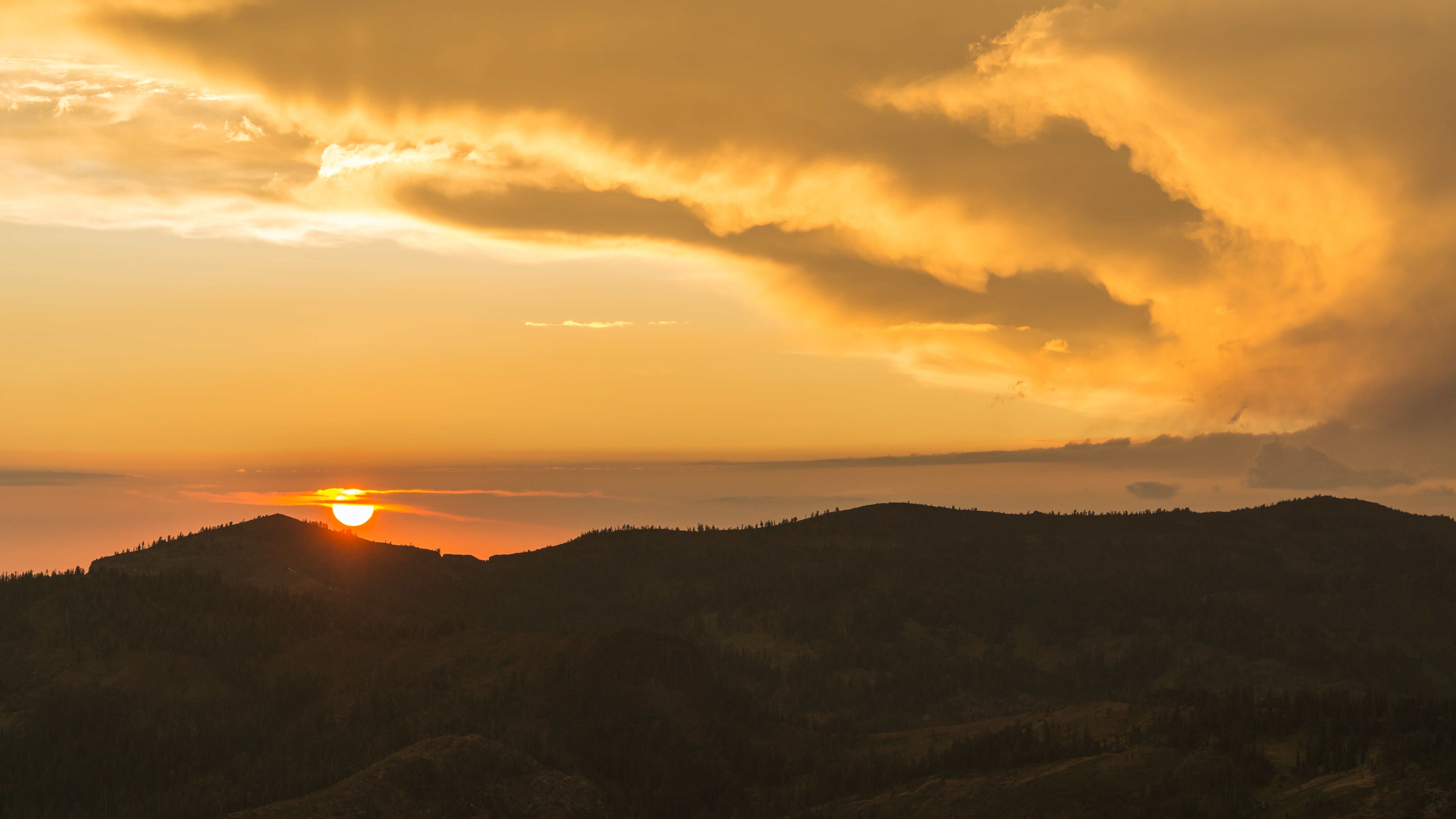



Comments 1
Man, I’ve been loving these posts about SOBO but the first part says there’ll be 5 parts, and there are only 3. Any chance the other 2 are still in the works?